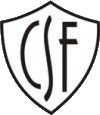Collège de la Sainte Famille
| CSF Collège de la Sainte Famille | |
|---|---|
 | |
| Location | |
| Cairo, Egypt | |
| Information | |
| School type | Private, Jesuit[1] |
| Religious affiliation(s) | Christianity |
| Established | 1879 |
| Status | Open |
| Age range | 5 - 18 |
| Language | French/English/Arabic/Spanish |
| Campus type | Urban |
| School colour(s) | Blue/red/white |
| Website | http://www.jesuitescsf.com/ |
The Collège de la Sainte Famille (English: School of the Holy Family; Arabic: مدرسة العائلة المقدسة), often abbreviated as CSF and referred to as Jésuites, is a private Jesuit French school for boys in the Faggala (preparatory and secondary section), Daher (primary section), and Heliopolis (primary section) districts of Cairo, Egypt. It was founded in 1879, after a request by Pope Leo XIII for a seminary to help prepare students to become priests in the Catholic Church.[2]
History
The college began with 16 pupils, in 1879, at the Boghos Palace of Mouski. In 1882 today's college was inaugurated in Faggala. The current Ramses Street was occupied by the Ismailia Canal. The transportation of students was by fiacres. The college had 112 students.
Thereafter was built: the church (1891), the theatre (1892), the current building of Preparatory Cycle (1925), the Primary Cycle in Downtown Cairo (1930), and the Primary Cycle in Heliopolis (1934). In 1930, the college had 600 students from 14 nations: Egypt, France, Lebanon, Syria, Italy, Greece, England, Switzerland, Spain, Yugoslavia, Turkey, Czechoslovakia, Russia, Persia.[2]
System
The school offers education for boys (mainly in French) from the upper kindergarten to the senior high school level. There are three campuses: The Petit Collège du Caire (PCC), the Petit Collège d'Heliopolis (PCH), and the Grand Collège, located in Ramsis in Dahir. Students enter the PCC or the PCH at the age of four or five, and after six years of primary school they go to the Grand Collège. The PCC and the PCH have 400 students each and the Grand Collège has 800 students.
Along with the teaching of the French language, the Arabic language is taught from an early age and then in the primary period of education the English language is introduced. The exams and education are in French even in high school or Thanaweya Amma. All exams are written and prepared in French except for the Arabic language exam, History and Geography which are presented in Arabic.
The school also offers the French curriculum. It is optional and is in a preparatory phase starting from the last year in primary school to the last year in preparatory. Then in the last three years of school it is in its complete form. The student obtains the French diploma "Bac Français".
Notable alumni
- Prince Abbas Hilmi - member of the Egyptian Royal Family from the Muhammad Ali dynasty;
- Mourad Wahba Pasha - Egyptian high court judge and former Cabinet Minister;
- Wassef Boutros Ghali Pasha - former Egyptian Minister of Foreign Affairs;
- Maximos V Hakim - late Melkite Greek Catholic Patriarch;
- Georges Corm - Lebanese economist and former Minister of Finance of Lebanon;
- Henri Curiel - left-wing activist and founder of the Democratic Movement for National Liberation;
- Gilbert Sinoué - French author and screenwriter;
- Monir Fakhri Abdel Nour - former Minister of Tourism;
- Magued Osman - former Minister of Communications and Information Technology;
- Mohsen Badawi - businessman and founding member of the Canada Egypt Business Council;
- Ramy Lakah - Egyptian-French businessman;
- Robert Solé - French writer and journalist of Egyptian origin;
- Nagy Habib - Professor of Surgery, Imperial College, London;
- Hisham Selim - actor;
- Victor Credi - Award winning Director of Photography;
- Mohamed Imam - actor;
- Tarek Nour - founder and CEO of Tarek Nour Advertising.
- Amr El Barbary - CEO of Palm Hills Properties.
- Boutros Boutros Ghali - Former UN Secretary General and former Egyptian foreign minister
- Fouad Mansour - Editor in Chief Al-Ahram Hebdo, Ahram Online
- Karin Khouzam- Ultras Ahlawy member martyr who was one of the victims at Port-Said stadium massacre
External links
Footnotes
Coordinates: 30°05′25″N 31°20′09″E / 30.0903°N 31.3358°E